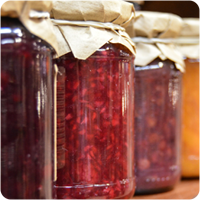Het arrangement How to Feed the World v456 is gemaakt met Wikiwijs van Kennisnet. Wikiwijs is hét onderwijsplatform waar je leermiddelen zoekt, maakt en deelt.
- Auteur
- Laatst gewijzigd
- 11-05-2025 22:55:01
- Licentie
-
Dit lesmateriaal is gepubliceerd onder de Creative Commons Naamsvermelding-GelijkDelen 4.0 Internationale licentie. Dit houdt in dat je onder de voorwaarde van naamsvermelding en publicatie onder dezelfde licentie vrij bent om:
- het werk te delen - te kopiëren, te verspreiden en door te geven via elk medium of bestandsformaat
- het werk te bewerken - te remixen, te veranderen en afgeleide werken te maken
- voor alle doeleinden, inclusief commerciële doeleinden.
Meer informatie over de CC Naamsvermelding-GelijkDelen 4.0 Internationale licentie.
Aanvullende informatie over dit lesmateriaal
Van dit lesmateriaal is de volgende aanvullende informatie beschikbaar:
- Toelichting
- Deze les valt onder de arrangeerbare leerlijn van de Stercollectie voor Engels voor vwo, leerjaar 4, 5 en 6. Dit is thema 'Food issues'. Het onderwerp van deze les is: How to Feed the World. In deze les wordt er aandacht besteedt aan hoe om te gaan met de houdbaarheidsdatum. Daarbij komt een artikel aan bod over verbouwingsmethoden en hoe het beste omgegaan kan worden met de problemen rondom voedselschaarste in de wereld.
- Leerniveau
- VWO 6; VWO 4; VWO 5;
- Leerinhoud en doelen
- Engels;
- Eindgebruiker
- leerling/student
- Moeilijkheidsgraad
- gemiddeld
- Studiebelasting
- 4 uur 0 minuten
- Trefwoorden
- arrangeerbaar, engels, houdbaarheidsdatum, how to feed the world, stercollectie, v456, verbouwingsmethoden, voedselschaarste

 In this next section you are going to watch a video about expiry and best by dates and read an article entitled 'Feed the world'. It is an opinion article in which the author sets out some ideas for the problem that we will face in 2050:
In this next section you are going to watch a video about expiry and best by dates and read an article entitled 'Feed the world'. It is an opinion article in which the author sets out some ideas for the problem that we will face in 2050:


 Answer these questions with your partner:
Answer these questions with your partner: It’s been 50 years since President John F. Kennedy spoke of ending world hunger, yet on the eve of World Food Day, Oct. 16, the situation remains dire. The question “How will we feed the world?” implies that we have no choice but to intensify industrial agriculture, with more high-tech seeds, chemicals and collateral damage. Yet there are other, better options.
It’s been 50 years since President John F. Kennedy spoke of ending world hunger, yet on the eve of World Food Day, Oct. 16, the situation remains dire. The question “How will we feed the world?” implies that we have no choice but to intensify industrial agriculture, with more high-tech seeds, chemicals and collateral damage. Yet there are other, better options.
 Your teacher has asked you to write a summary of the reading about 'Feed the world' for some colleagues who were on a school trip.
Your teacher has asked you to write a summary of the reading about 'Feed the world' for some colleagues who were on a school trip. What have you learnt in this period?
What have you learnt in this period?